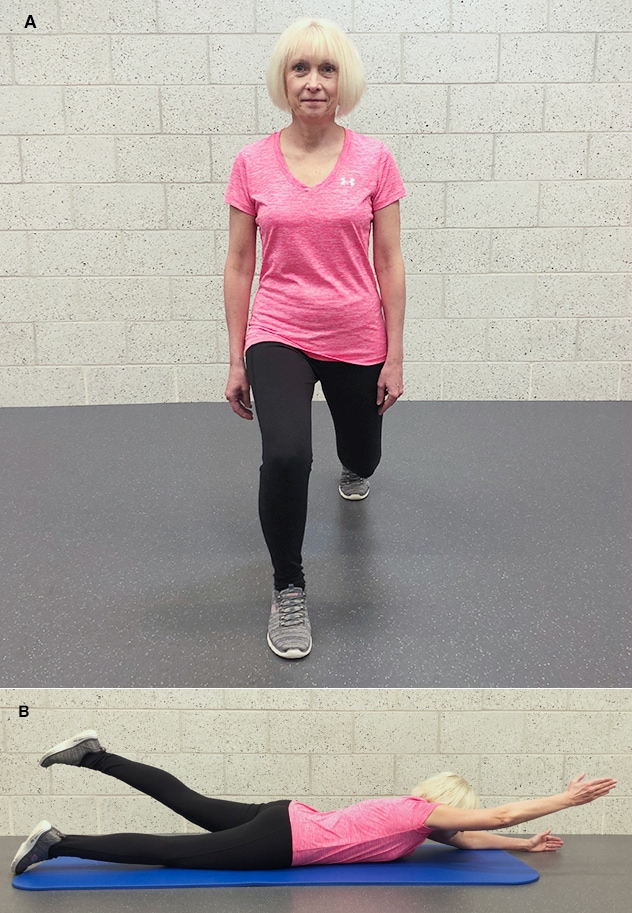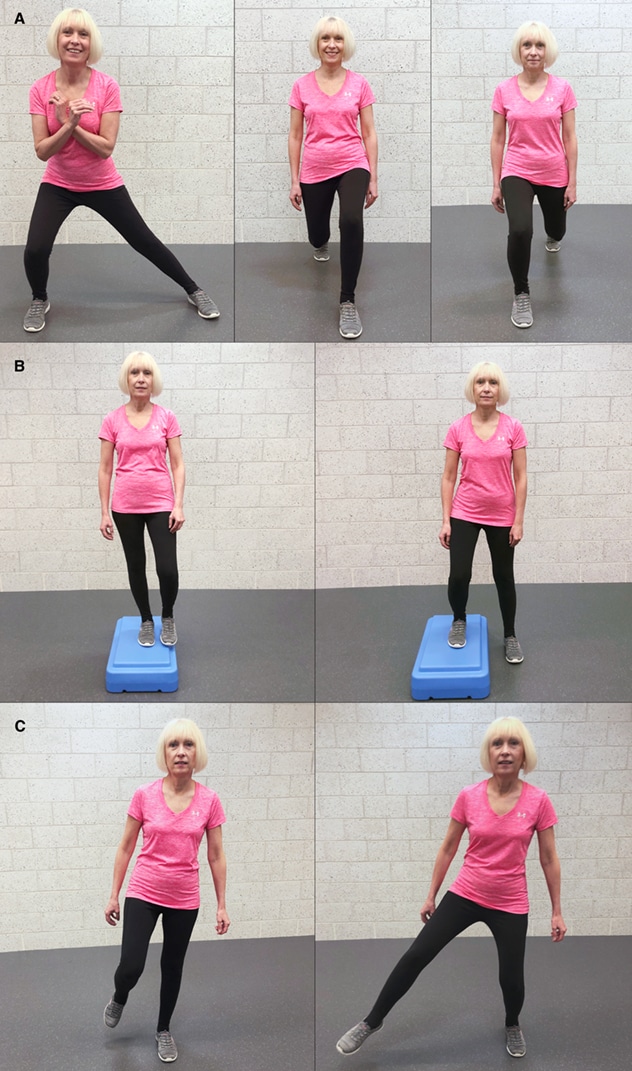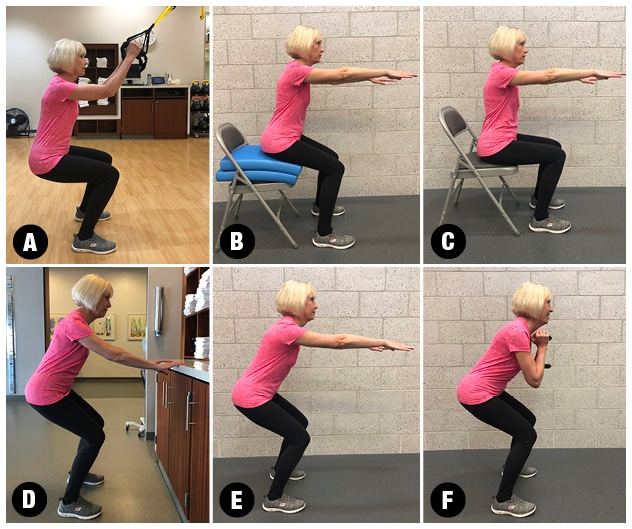April 17, 2020
As people age, their risk of fracture, often resulting from a fall, increases. "Falls and especially fractures can lead to functional decline, impacting the ability to live independently and pursue activities and interests," says Kurt A. Kennel, M.D., Endocrinology, Diabetes, Metabolism, and Nutrition at Mayo Clinic in Rochester, Minnesota. "This outcome is especially true for people living with osteopenia or osteoporosis, particularly those with frailty or sarcopenia. But what can people do about it?"
"In addition to ensuring safety in home and living environments, they can improve functional fitness and bone strength through exercise. But is it safe to exercise with low bone mass? Done correctly, yes. Can one become more active at an older age? Of course. Can one develop activities that are compatible with their own limitations? Yes, they can."
Dr. Kennel discussed the exercise options available with Alynn C. Dukart, P.T., D.P.T., Dan Abraham Healthy Living Center at Mayo Clinic in Rochester, Minnesota, who supplied the following information about the center's Healthy Living Program and its approach to improving bone health:
Motto of the Mayo Clinic Healthy Living Program
- Safe movement: Instruction in proper lifting and body mechanics and individualized spine and hip precautions
- More movement: Realistic tips and education for decreasing sedentary time and increasing overall activity throughout the day
- Effective movement: Education and a personalized program regarding weight-bearing exercise, strength training and balance
The Dan Abraham Healthy Living Center offers a group class that provides general education on exercise and bone density, as well as private sessions with a physical therapist or dietitian. The main goal of the private sessions with a physical therapist is to help an individual establish an effective and safe exercise program that is specifically tailored to bone health.
While there is evidence in support of weight-bearing exercise, strength training and spinal extension exercises for maintaining and slightly improving bone density, there are many exercise principles that need to be taken into consideration to ensure optimal program effectiveness. It is also prudent to individualize the program based on each patient's skill level and other medical history to ensure proper technique, safety, and ultimately compliance and effectiveness. For example, two women of the same age and T-score might need to have significantly different programs depending on their exercise experience, body awareness, strength, mobility and balance.
The exercise principles that apply to patients with osteoporosis include exercise specificity, volume, overload and progression.
Exercise specificity
Impact and weight-bearing exercises
Ideally, these exercises should have an impact and load component that includes bearing weight or impact into the ground. Each time the foot strikes the ground, or steps or lands on a surface, that impact helps signal and stimulate bone metabolism. Consider lunges, step-ups or hopping.
Examples of site-specific exercises

Examples of site-specific exercises
Examples of site-specific exercises. A. Lunge loading the hips and spine. B. Prone spinal extension loading the spine.
Site-specific exercises
These exercises must put a physical loading pressure on the areas of concern. For example, to improve bone density in the hips and spine, load the hips and spine.
Multijoint involvement
The more joints that are involved, the more muscle groups that are mobilized and strengthened. A seated leg extension machine only works one joint (the knee) and one muscle (the quadriceps) as opposed to a standing lunge that works mobility in three joints (the hip, knee and ankle), strengthens multiple muscle groups (glutes, quadriceps, hamstrings, calves and lateral hip musculature), as well as stretches the hip flexor and quadriceps of the hind leg.
Examples of multidirectional exercises

Examples of multidirectional exercises
Examples of multidirectional exercises. A. Lunge clocks (12 o'clock, 3 o'clock and 6 o'clock). B. Side step-ups. C. Hopping in various directions.
Multidirectional loading
Bone responds better to multidirectional loading, so it's important to exercise and load bones in multiple directions and planes of motion.
Function
Which is more functional, a seated knee extension exercise or a lunge? In everyday life, what motions do people do that are similar to a seated knee extension? Not many, if at all. A lunge, however, replicates many important daily activities, including getting up and down off the floor. Similarly, every time you get up and down from a chair or toilet you are performing a squat.
Safety
When patients are told to not bend forward or flex their spine to pick up something, the message should be understood as the need for them to perform a full squat or lunge properly and safely instead.
Volume
For any exercise, three to five sets of six to 12 repetitions (for a total of about 30 to 36 repetitions) is deemed most effective.
Overload
Load and intensity need to exceed that of daily activities to provide benefit.
Walking
Research shows that to achieve benefit on bone mineral density, intensity during walking should aim to exceed 80% of maximal heart rate. Faster speed equates to greater ground reaction force, which helps stimulate bone remodeling. Recent studies have suggested that interval training is more effective than steady state walking or running. At the Dan Abraham Healthy Living Center, some patients opt for a stress test to ensure accurate heart rate zone recommendations and sufficient health and safety for their cardiovascular program.
Progression
Examples of progressive exercises

Examples of progressive exercises
Examples of progressive exercises. A. Assisted squat or lunge via a suspension apparatus in which body weight is offloaded. B. Sit to stand from chair with cushions or pillow. C. Sit to stand from chair. D. Mini counter squats. E. Body-weight squat or lunge working toward full range of motion. F. Once full range of motion achieved, then slowly add weight and progress to squat and lunge variations.
To build on the beneficial results of the exercise program, the stimulus must be progressively increased; otherwise, the body does not perceive any overload, which can result in a plateau. Each individualized program should be revisited every two to three months.
Spinal and hip precautions
Spinal flexion is the highest risk movement for fracture, in addition to spinal rotation or side bending, and especially combination movements, so the specific precautions may vary per individual due to individual differences in spinal and hip range of motion, body awareness, other medical conditions and overall strength, as well as the T-score and perhaps even trabecular bone score (TBS). For example, a 50-year-old woman with a spinal T-score of -1.5 and a good TBS who has excellent spinal range of motion, body awareness, fitness level and strength may not need spinal precautions as strict as those for an 80-year-old woman with a T-score of -2.8, poor TBS, and poor body awareness and mobility.
Other considerations
Other factors to consider when planning an exercise program for bone density include patient uncertainty, the benefits of Pilates and yoga, and proper lifting and weight restrictions.
Fear of the unknown
Most patients with osteoporosis or osteopenia want to do whatever they can to improve or maintain their bone density, but unfortunately most don't know where to start and are also confused about what they should and should not do. This uncertainty results in many of them avoiding exercise or limiting themselves in terms of intensity or load.
Pilates and yoga
While Pilates and yoga do contain movements or postures with spinal flexion, rotation, side bending, and hip external and internal rotation, there are many beneficial aspects, too, especially for spinal extension and balance. Prone spinal extension exercises are very beneficial for bone density, and balance is important for fall risk reduction.
Lifting and weight restrictions
It is common for patients to be told to not lift more than 10 pounds, to avoid flexing their spines while lifting. However, the reality is that no one should bend forward to lift an object with a rounded spine regardless of the weight, since it is not ideal body mechanics.
Conversely, it is important to distinguish between bending forward to lift an object and lifting weights as part of a strength training program. Patients should understand that strength training is beneficial and many strength training exercises can safely be completed with more than 10 pounds of weights.
There are many factors at play when developing a bone density exercise program. Other than the overarching guiding principles, there is really no one-size-fits-all program: Some exercises may be safe for one person but not be safe for another, and while a 10-pound squat might optimally load someone, it might not optimally load someone else. In addition, if someone has any other medical conditions or joint pain, modifications may be needed to address those areas of concern.
For more information
Dan Abraham Healthy Living Center. Mayo Clinic.
Mayo Clinic Healthy Living Program for optimization of bone health. Mayo Clinic.